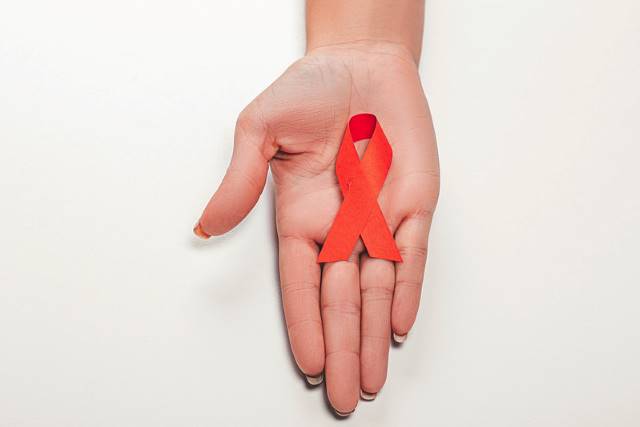HIV/AIDS in Ukraine
 Ukraine has one of the highest rates of HIV/AIDS in the world, with an estimated 260,000 people living with the disease. Odessa, the third-most populous city in Ukraine, has “the highest concentration of HIV/AIDS of anywhere in Europe.” Poverty exacerbates HIV/AIDS in Ukraine and links to injected drug use, threats to government funding, lack of access to antiretroviral treatment and social discrimination.
Ukraine has one of the highest rates of HIV/AIDS in the world, with an estimated 260,000 people living with the disease. Odessa, the third-most populous city in Ukraine, has “the highest concentration of HIV/AIDS of anywhere in Europe.” Poverty exacerbates HIV/AIDS in Ukraine and links to injected drug use, threats to government funding, lack of access to antiretroviral treatment and social discrimination.
Poverty and HIV/AIDS in Ukraine
In 2019, Ukraine and Moldova stood as the two most impoverished countries in Europe. The poverty rate in Ukraine increased during the COVID-19 pandemic, from 42.4% in 2020 to 50% as of February 2021. There is a strong connection between poverty and the spread of diseases; disease could be both a cause and a result of poverty.
HIV/AIDS causes conditions of poverty when working adults become ill and can no longer support their families. The disease becomes a result of poverty when the conditions of poverty put people at greater risk of contracting it. As an example, women and girls who live in poverty are more vulnerable to sexual exploitation. They are more likely to resort to working in the sex trade, which could put them at high risk of contracting HIV.
HIV/AIDS in Ukraine’s Women and Girls
UNAIDS estimates that out of all people with HIV/AIDS in Ukraine, 120,000 are women older than 15 and 2,900 are children aged 14 or younger. Gender inequality, poverty and violence against women and girls are significant factors in the spread of HIV. Women and girls who live in fear of violence may be reluctant to advocate for safe sex, receive testing or seek treatment for HIV and other diseases.
Gender inequality inhibits women’s access to resources for sexual and reproductive health. In rural Ukraine, where the poverty rate is highest, 36% of women do not participate in community or family decision-making. Only 46% of these women are competent with a computer or the internet. Furthermore, almost 48% do not have access to medical services.
The Lack of Access to Antiretrovirals
As Sky News reported, access to antiretrovirals is a major problem for many people living with HIV/AIDS in Ukraine. Although a law stipulates that antiretroviral therapy should be free to all citizens, limited national resources have resulted in restricted access.
Antiretrovirals are crucial for preventing the spread of HIV to children. The use of antiretrovirals during pregnancy and administered to an infant for four to six weeks after birth can result in a transmission rate of 1% or less. According to U.N. Women, the majority of women living with HIV/AIDS in Ukraine fell between 18 and 45 years old. Out of these women, 39% discovered that they were HIV-positive during pregnancy.
Social Discrimination Against People Living With HIV/AIDS
According to the World Health Organization (WHO), discrimination against people who use drugs and people living with HIV presents a serious challenge to identifying those who need treatment. Harsh drug laws, fear of HIV/AIDS and systematic police abuse undermine efforts to provide HIV information and services such as testing and safe needle exchanges. In addition, the law requires drug treatment centers in Ukraine to register drug users and share the information with law enforcement. This protocol keeps people who use drugs from seeking medical help, which subsequently prevents them from testing and receiving treatment for HIV/AIDS.
The War in Donbas
The war in Donbas has made it difficult for people to receive treatment in a region that previously had one of the highest rates of HIV/AIDS in the country and was home to nearly one-quarter of all antiretroviral recipients. When the war began in March 2014, it displaced 1.7 million people. To compound this, unsafe sex has resulted in an increase of HIV/AIDS within the military. Combined with ongoing military conflict and a shortage of antiretrovirals, Ukraine is experiencing a crisis: the government has failed to keep up with infection rates.
Solutions
In July 2021, Ukraine received a grant of $35.8 million from the Global Fund to Fight AIDS, Tuberculosis and Malaria. According to the Ukrainian government, the nation would use the funds to purchase personal protective equipment (PPE), reduce risks associated with COVID-19 and strengthen the health care system.
Ukraine is collaborating with the Centers for Disease Control and Prevention (CDC), USAID and the U.S. President’s Emergency Plan for AIDS Relief (PEPFAR). The country wants to implement prevention campaigns, increase access to antiretroviral treatment and target key risk groups, such as people who inject drugs, sex workers and men who have sex with men.
On September 1, 2021, President Biden announced that the United States would provide more than $45 million in additional assistance for Ukraine. The aid would help people facing the impacts of the COVID-19 pandemic and the war in Donbas. The U.S. is working with USAID-supported programs to provide supplies for Ukrainian health care centers, training for health care workers and psychosocial support for the most vulnerable populations.
– Jenny Rice
Photo: Flickr
